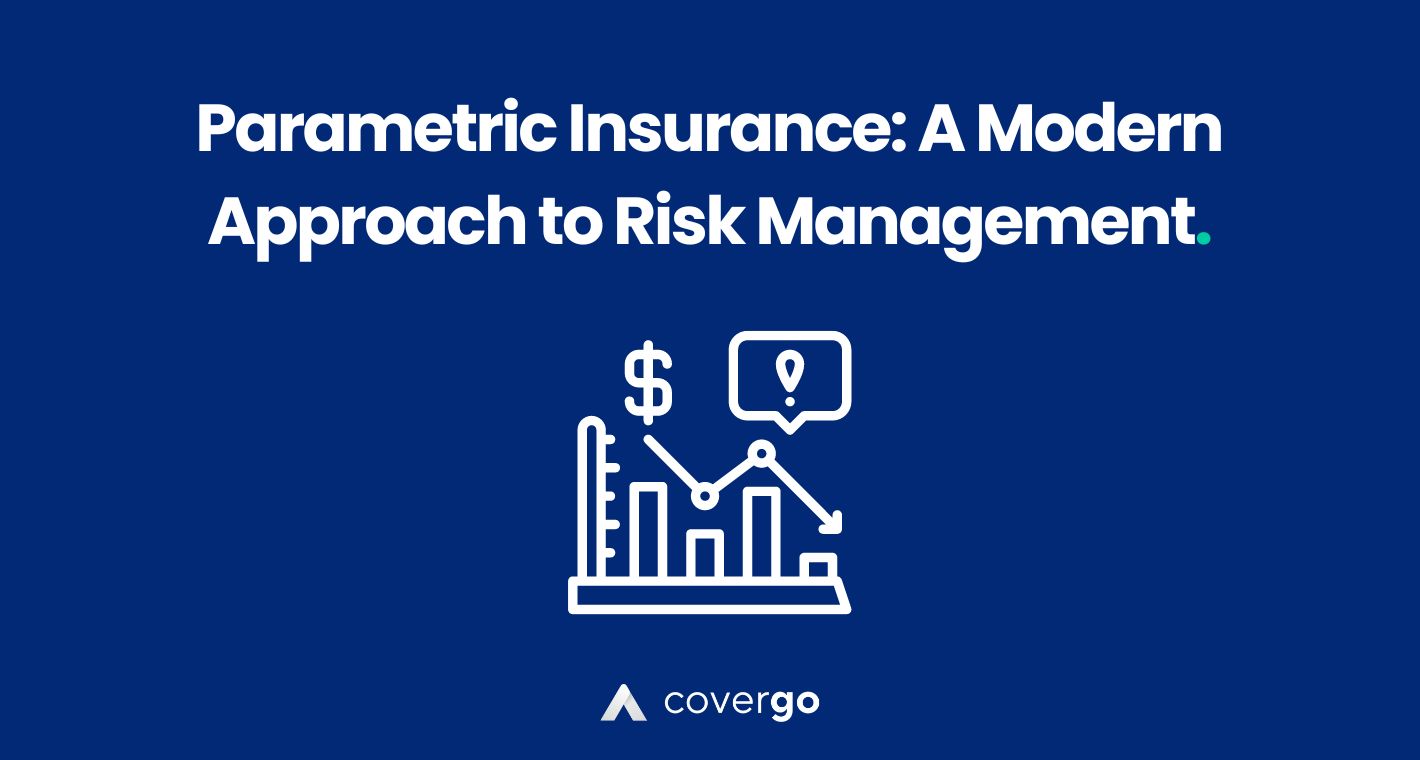Key Takeaways:
- The Rise of Parametric Insurance: It’s becoming the go-to choice for corporations needing relevant coverage for climate-related risks and economic volatility.
- Protection Gap Solution: Parametric insurance addresses the gap left by traditional insurance in covering disaster losses, offering swift and reliable payouts.
- Industry Innovation: The insurance market is innovating with parametric insurance to meet increasing demands for coverage amidst a hard market.
A Shield Against Climate & Economic Uncertainties
As the world grapples with the unpredictable nature of climate change and the economic repercussions of global inflation, the insurance industry is pivoting towards a more resilient and responsive model: parametric insurance. This model is not just an alternative; it’s becoming the preferred choice for many corporations.
Here’s a detailed look at the driving forces behind this shift and the unique benefits of parametric insurance:
The Climate Change Conundrum
The recent years have seen a surge in natural catastrophes, with Hurricane Ian in 2022 marking itself as the costliest, causing over $95.5 billion in economic losses1. The traditional insurance sector found itself overwhelmed, leaving a 58% protection gap with most disaster losses uninsured1. This gap is a stark reminder of the need for a more adaptable insurance model.
Europe’s Drought – A Wake-Up Call
The drought that Europe experienced in the summer of 2022 was its worst in 500 years. It severely impacted all major rivers, especially the Rhine, which saw a 75% reduction in barge loading capacity in August. The drought also led to a 16% decrease in staple grain yield compared to the five-year average and contributed to wildfires that triggered health warnings across the EU1. The previous year’s catastrophic floods, particularly in Germany, caused damages estimated at over €30 billion.
Market Capacity and Budget Constraints
With the insurance industry facing a hard market due to natural catastrophe losses, inflation, and geopolitical instability, the traditional model is under pressure. Carriers are reducing capacity while the demand for protection is increasing at an alarming rate. Only 42% of the previous year’s losses were covered by insurance, indicating a pressing need for change.
What Sets Parametric Insurance Apart?
Parametric insurance operates on a different principle than traditional insurance. It uses predefined, objective indicators to determine payouts, which are triggered when a catastrophic event occurs. This model is particularly suited to address the challenges posed by climate change and other emerging risks like cyber threats.
Here are some examples that illustrate how parametric insurance sets itself apart:
Natural Disaster Coverage
For instance, parametric insurance can be structured to provide payouts based on the magnitude of an earthquake. If a policy is set with a trigger for a magnitude 7.0 earthquake within a specific geographical area, and such an event occurs, the policyholder would receive a predetermined payout, say USD 10 million, regardless of the actual physical damage.
Agricultural Sector
In agriculture, parametric insurance might be tied to crop yields or weather conditions. A policy could be designed to pay out if rainfall levels fall below a certain threshold, which is critical for crop survival. This helps farmers manage the financial risk of a bad harvest due to drought conditions.
Energy Sector
For energy companies, parametric insurance would cover the reduction in power generation due to lack of wind for wind farms or insufficient sunlight for solar panels. The payout would be triggered based on recorded wind speeds or sunlight levels, providing financial stability despite the variability of natural resources.
The Advantages of Parametric Insurance
- Rapid Response: One of the most significant benefits of parametric insurance is the speed of its payouts. Without the need for lengthy loss-adjustment procedures, financial relief is provided swiftly after a disaster.
- Clear Terms: The clarity of parametric insurance contracts, with their predefined triggers, offers corporations a transparent and straightforward understanding of their coverage.
- Relevance to Modern Needs: As new risks emerge, parametric insurance remains relevant and adaptable. It’s designed to meet the needs of today’s corporations, especially in the face of climate change and cyber threats.
Looking Ahead in the Future
The rise of parametric insurance marks a critical evolution in risk management. It’s a strategic response to the complexities of the modern world, offering corporations a way to manage risks with greater certainty and efficiency. As we continue to face the challenges of climate change and economic volatility, parametric insurance stands as a testament to the industry’s ability to innovate and adapt.
Here are some key points on how these advancements will shape the future of parametric insurance:
- Data Precision and Advanced Analytics: AI and machine learning algorithms will enable insurers to analyze vast amounts of data with greater accuracy. This will improve the structuring of parametric triggers, ensuring they align closely with the actual risks and losses experienced by policyholders.
- Blockchain for Transparency and Trust: The use of blockchain technology can provide immutable records of data and transactions, increasing trust between insurers and policyholders. Smart contracts on blockchain platforms can automate the payout process, reducing the potential for disputes and ensuring timely compensation.
- IoT for Real-Time Data: The Internet of Things (IoT) will play a crucial role in providing real-time data for parametric insurance. Sensors and connected devices can monitor environmental conditions, such as weather or seismic activity, triggering instant payouts when predefined parameters are met.
- Customization and Flexibility: AI systems will facilitate the creation of a wider range of measurable and objective digital parametric triggers for new risks. This will amplify insurers’ ability to design tailored parametric coverages that cater to the specific needs of different industries and scenarios.
- Enhanced Risk Assessment: AI’s ability to quickly analyze more data will allow for more accurate risk assessments on properties and businesses. This will likely lead to an increase in the adoption of parametric policies across various insurance lines.
- Faster Claims Processing: AI can significantly speed up claims processing, reducing it from minutes to seconds. This efficiency will be particularly beneficial in the aftermath of disasters, allowing for quicker recovery and preventing further damage.
FAQs
Parametric insurance uses objective triggers like weather events to determine faster payouts without assessing actual losses, unlike traditional insurance which pays out based on loss amount.
Triggers are based on measurable indicators like earthquake magnitude, rainfall levels, wind speeds, etc. that are pre-determined and outline clear conditions for policy payouts.
Benefits of parametric insurance include fast payouts without lengthy claims, clear coverage terms, managing risks of climate change, and more volatility through predetermined triggers.
Recent posts
- How Low/No-Code Platforms are Democratizing AI for Insurers
- All of the ways AI is Transforming the Insurance M&A Industry.
- 10 Crucial Mistakes to Avoid When Filing an Insurance Claim
- 5 Important Tips That Will Make Filing Claims For Specialized Policies a Breeze
- Artificial Intelligence as The New Defender Against Insurance Fraud



